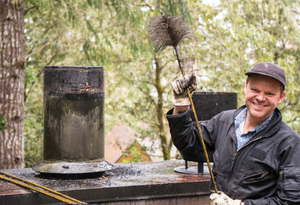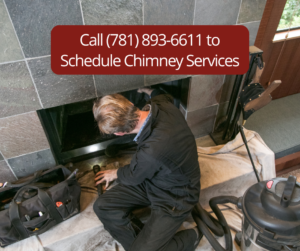What Kinds of Tools Do Chimney Techs Use?
Do you know how many or what tools are needed to conduct a chimney sweeping? Chimney cleaners use various chimney sweeping tools, even some you may not have known were needed for a chimney cleaning! Keep reading to learn what tools are used to clean a chimney and why it’s important to have a professional conduct your cleaning.
Chimney Sweeping Tools
Brush Types
There are many more types of brushes to use during a chimney sweep than most people may have realized. Each type of brush serves a different specific and necessary function.
Wire Chimney Brush
Every chimney sweep uses the most dependable chimney sweep brush—a trustworthy wire brush—to attack difficult-to-reach crevices and corners. These work particularly well for cleaning clay-flued masonry chimneys. This kind of chimney sweep brush might be sufficient to remove the glazed or tarred creosote deposits from a flue, but occasionally you need to use the heavy-duty equipment for chimneys that haven’t been touched by a bristle for a while.

Polypropylene Brush
An alternative to the wire brush for more delicate chimneys, such as those lined with stainless steel, is a polypropylene brush. A soft poly brush makes sure that the homeowner’s steel liner’s warranty isn’t deemed void due to unnecessary scratching and scuffing.
Smoke Chamber Brush
There are other parts of the chimney that might accumulate creosote in addition to the flue lining. By including the proper smoke chamber brush in your chimney cleaning kit to remove creosote buildup, you can ensure that homeowners won’t be put in danger.
Chimney Sweeping Rods
Sometimes, the brush a chimney cleaner has isn’t long enough to reach all of the crevices they need to clean. When that is the case, they must have a flexible chimney cleaning rod. With a rod that fits many different types of brushes, a cleaning rod can be used universally on brushes as an extender to reach everywhere within the chimney.
Chimney Cleaning Agents
When brushes aren’t enough, a professional chimney cleaner would resort to chimney cleaning agents. The walls of the flue lining can become severely coated with soot and creosote deposits, therefore experts know to use tried-and-true chimney cleaning products that have been shown to remove even the thickest layers of creosote. When standard cleaning techniques fall short, these high-grade chemical cleaners remove glazed creosote.
Industrial-strength chimney cleaners provide a speedy, safe solution without breaking the bank or requiring you to scrub for an eternity. To avoid hazardous emissions compromising the air quality of the household, choose a cleaning chemical that is non-toxic and environmentally friendly.
Ceramic Glass Cleaner
Not all fireplaces and chimneys are constructed using the same types of common building supplies. You must use a cleaning solution made for ceramic glass when you come across it. You can remove creosote or soot buildup from the ceramic glass itself and prevent further formation by using a conditioning liquid for fireplaces and grills.
Powder-Based Creosote Remover
Professional chimney cleaners continue to favor A.W. Perkins Co. Creosote Remover when looking for a chemical cleaner that is effective with airtight fireplaces. Modern homes frequently have zero-clearance fireplaces, which are typically constructed with a metal flue. By eliminating any buildup of soot and ash, a powder-based mixture will enhance the fireplace’s overall function while also improving ventilation.
Call Boston’s Best Chimney for Your Next Chimney Cleaning
As you can tell, a lot goes into chimney cleaning, including knowing what chimney cleaning tools to use. Boston’s Best Chimney’s technicians are highly knowledgeable with years of experience. They know all the right chimney cleaning tools to use so that you don’t have to worry about it all. Get in touch with us to schedule your chimney cleaning here or give us a call at (781) 893-6611.
The post What Kinds of Tools Do Chimney Techs Use? appeared first on Boston's Best Chimney.
